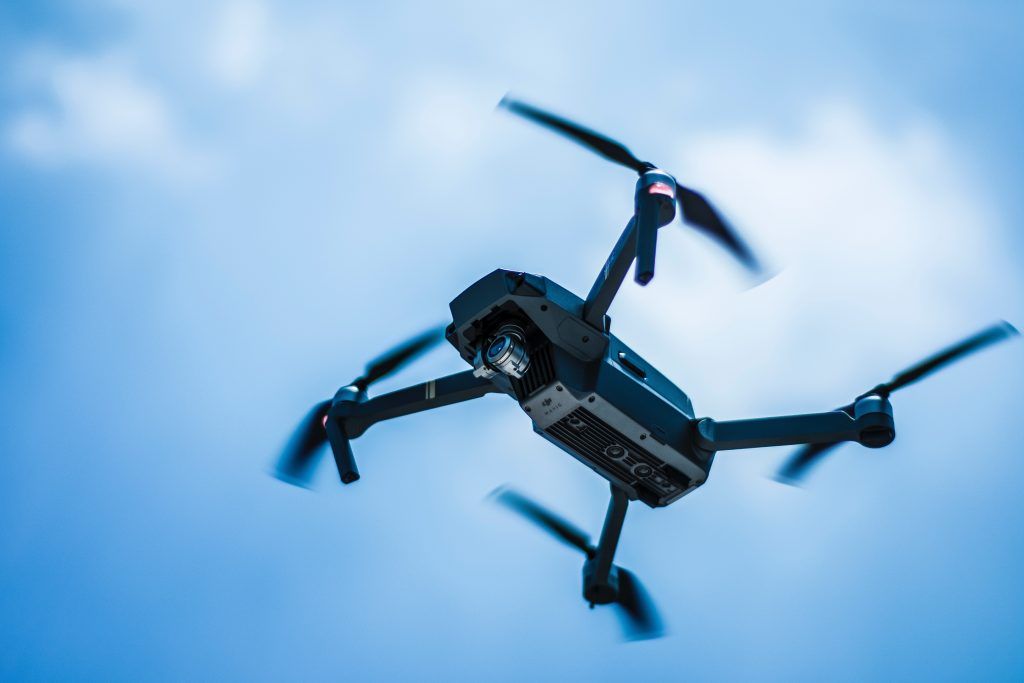Decades in the making: The Iranian drone program
By Ariane Tabatabai | October 12, 2017
 Disruptive technology drone
Disruptive technology drone
This summer, Iran’s drone program became the latest component of the country’s defense sector to make headlines. In August, an unarmed Iranian drone reportedly came within 100 feet of an American fighter jet in the Persian Gulf. Earlier in the summer, the United States downed two Iranian drones, which it said, were flying in close proximity to US-backed ground forces in Syria. In June, Pakistan too stated it had shot down an Iranian drone flying in its airspace.
These incidents put the Iranian drone program on Western observers’ radars as a new potential threat associated with the Islamic Republic. But Iran’s drone program actually started decades ago and serves a number of military and civil purposes. As Tehran deploys its drones more regularly, for more purposes and in more locations, policy-makers will have to understand the program’s nature, scope, strengths, and limitations if they want to effectively respond to it.
How it started. The Iranian drone program is one of the oldest in the world. It started in the 1980s during the devastating Iran-Iraq War, in which Iran found itself isolated and the target of indiscriminate Iraqi missile and chemical weapon attacks. After the eight-year-long war, the country started or resumed many defense projects, including its controversial chemical, biological, and nuclear weapons efforts and ballistic missile program. Tehran was no longer able to procure weapons and equipment from its traditional allies, particularly the United States—with whom it no longer had diplomatic ties as a result of the hostage crisis, during which revolutionaries stormed the US embassy in Tehran and took its staff hostage for 444 days. To compensate, Tehran began to develop its own indigenous defense sector. As part of these efforts, Iran built an Unmanned Aerial Vehicle (UAV) program, which has since become one of the most comprehensive in the world.
Military applications. Today, Iran’s UAV program and capabilities often make the headlines because of their military applications. Given Tehran’s use of its drones beyond its borders, this focus on the military dimensions of the drone program makes sense. Iranian drones have been spotted from Pakistan to Syria and on to the Persian Gulf. But Iran’s drones don’t just get attention when they’re discovered aloft. The country makes sure to display its defense sector’s progress routinely; the drone program has become a centerpiece of its military technology exhibits. This allows Iranian leaders to show their domestic constituents that their security is provided for and that, while the region is increasingly volatile, Iranians have nothing to fear. These public drone displays also show foreign adversaries that sanctions and pressure don’t slow Iranian progress.
In 2012, Iran claimed it had downed and reverse-engineered a US Sentinel stealth surveillance drone, which had been used across the border in Pakistan to spy on Al-Qaeda’s leader, Osama bin Laden. That claim is fairly dubious, as are the statements the country has issued since suggesting that Iran’s drone program is ahead of the United States’. Its unlikely drone pontifications aside, however, Iran has developed a panoply of military UAVs that merit attention.
Iran’s UAV toolkit includes surveillance drones such as the Mohajer, which was used during the Iran-Iraq War, as well as armed drones, including the long-range H-110 Sarir, equipped with air-to-air missiles. The country also has developed surveillance and attack drones, such as the Karrar, turbo-jet-propelled drone, which can carry a single bomb, and Hazem, a rocket-propelled surveillance and attack UAV. Perhaps its most notable drones, however, are the Shahed 129, which can carry out 24-hour surveillance and strike missions, and one of the most recent additions to the arsenal, the Fotros. The Fotros has a reported range of 2,000 kilometers, can remain aloft for up to 30 hours, and is equipped with air-to-ground missiles.
These drones serve the country’s intelligence, surveillance, and counterterrorism efforts and are used in military operations, including the Iran-Iraq War and the Syrian civil war, in which Tehran has supported President Bashar al-Assad’s efforts to crush the opposition. Iran’s UAVs fit well with the country’s defense doctrine, which focuses on contending with adversaries—including the United States—whose conventional capabilities surpass its own. And drones represent a low-cost way of grappling with adversaries without putting Iranian lives on the line.
Domestically, Iran has used its drones in reconnaissance, surveillance, and target identification missions to support its counterterrorism efforts in border areas, where it’s faced a variety of terrorist groups for decades. These efforts have only accelerated—and are likely to continue to increase—since the 2017 twin attacks in Tehran perpetrated by the Islamic State (ISIS).
All this puts Iran in a fairly exclusive club. But the country’s ambitions transcend its borders. It hopes to become a UAV supplier for its allies, and Tehran doesn’t discriminate between states and non-state actors. Both the Assad regime and Hezbollah have benefitted from Iran’s drone program.
Civilian applications. Iran’s drones aren’t limited to military applications. But the country’s significant civilian uses of drones are often overlooked in Western discussion of the Iranian UAV program, even though the most interesting and underappreciated components of Iran’s UAV program lie in non-military realms.
The country has sought to develop a fairly comprehensive civil drone program, allowing it to tackle a range of challenges, including, for example, sea rescue, a mission the Par undertakes thanks to the life preservers it carries and can drop to people stranded on the high seas. Iran also uses drones to tackle environmental challenges, including ecosystem degradation and water scarcity. Under Massoumeh Ebtekar, the former head of the Department of Environment, that ministry entered an agreement with the Ministry of Defense under which some provinces leveraged the country’s drone program to assess habitats, gather data on wildlife, patrol protected areas, identify individuals in violation of fishing and hunting laws, and monitor and fight fires.
Iran’s UAV program is likely to continue making headlines in the West—and in the United States in particular—for its military applications, but the country is rapidly developing a comprehensive civilian program aimed at tackling challenges domestically and abroad. Even though it is now decades old, the Iranian drone program continues to suffer shortcomings, some inherent to the technology—such as the trade-off between range and autonomy—and others stemming from the defense sector’s need to develop the right infrastructure and trail to support UAVs.
Nevertheless, the country is investing in and will continue to build its program and position itself to become an international UAV supplier. While the military components of the program will continue to challenge US national security interests, its growing civilian emphasis can serve as an interesting case study for governments and businesses outside Iran.
Together, we make the world safer.
The Bulletin elevates expert voices above the noise. But as an independent nonprofit organization, our operations depend on the support of readers like you. Help us continue to deliver quality journalism that holds leaders accountable. Your support of our work at any level is important. In return, we promise our coverage will be understandable, influential, vigilant, solution-oriented, and fair-minded. Together we can make a difference.














